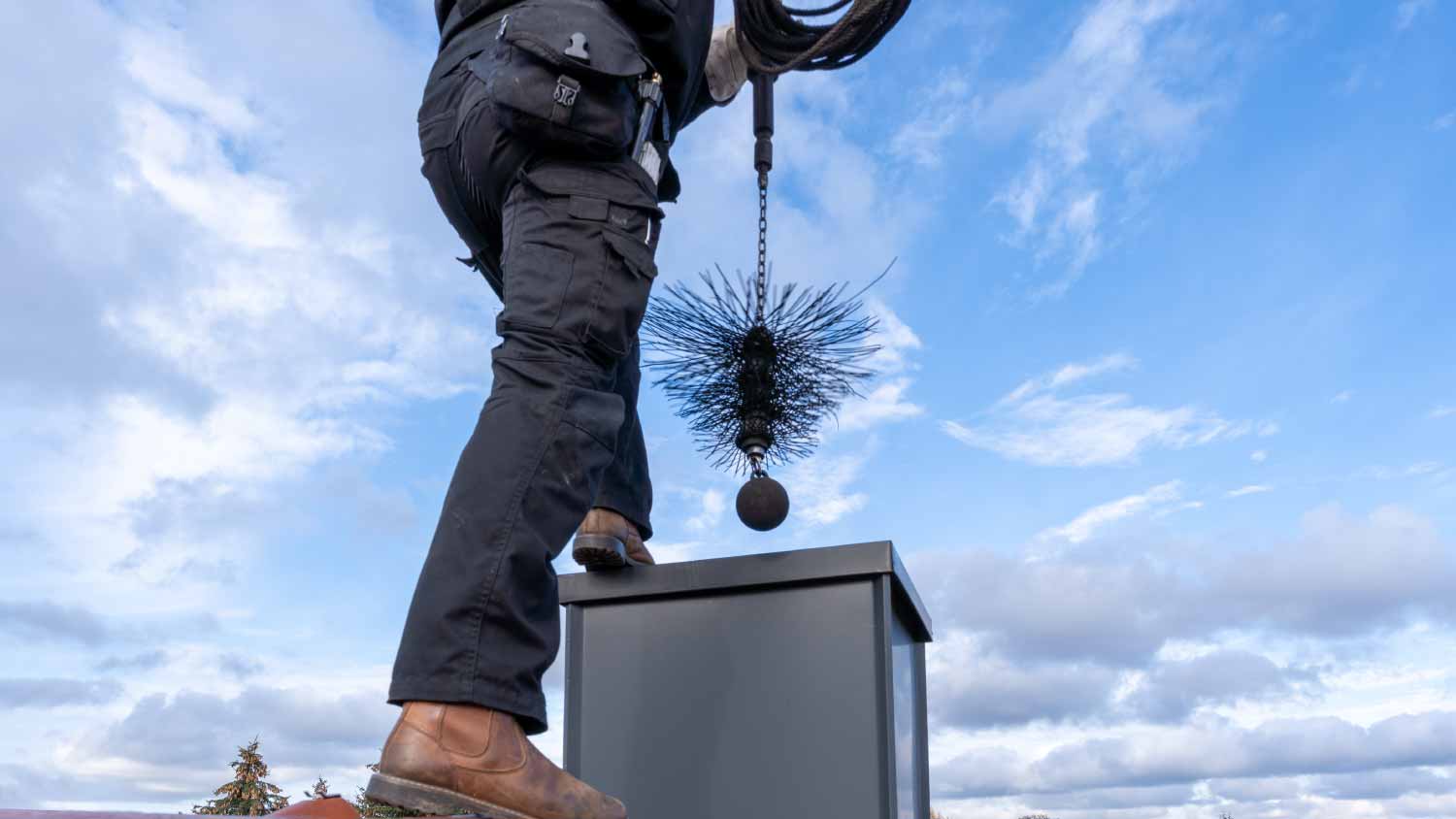
The average cost to repair or replace a chimney crown depends on the damage, material, and any other chimney maintenance services bundled into your project.
Soot the chimney, not your home


Your fireplace serves as a cozy place to enjoy a night in. You’ll want to make sure you have proper insulation, or else you run the risk of having smoke waft all around your home. This is where the chimney flue comes into play and why it’s important to know how to close the chimney flue and open it.

Make sure your fireplace is off first and that there’s no heat emitting from it. Next, grab a flashlight and lean in to look up into your chimney by shining the light. If you see the night sky or feel cool air blowing on your face, it indicates that your flue is open. Meanwhile, if you see the damper (metal plate), it means your flue is closed. You’ll want to inspect this before every use, as you want the flue open before using your fireplace.

When you know your flue is open, here is a step-by-step guide on how to close it:
Should you have a gas fireplace, you’ll want to turn off the gas. With wood fireplaces, you’ll need to wait until the firewood burns completely. From here, check to see if any heat emits from the fireplace. If none does, you’re free to proceed.
Next, you’ll want to put on some work gloves. Ideally, look for sweep gloves. These are longer than standard gloves, extending up your arm to your armpits. Using these prevents soot and ash from staining your hand or arm.
Lean into your fireplace armed with your flashlight and shine it around. You’re looking for a vertical lever, pull chain, or knob, any of which closes the flue. Start by examining the front of the fireplace, where many of the levers and pull chains typically sit. However, some models might also have them elsewhere, so if you can’t find them in the front, shine your light around until you locate them.
Meanwhile, if your fireplace has a knob, it will be on the front of the fireplace. This knob is responsible for opening and closing the damper.
For fireplaces with levers, you want to free the flue from its support tab by pushing up. After it releases, keep pulling the lever away from the tab to close the flue. Once it’s tight, run your hand up the chimney to make sure you don’t feel any air. If you don’t, you’re good to go.
Meanwhile, for fireplaces with pull chains, locate the longer chain and pull it. Doing this disengages it from the damper. From here, you’ll pull the shorter chain to close the flue.
And, for fireplaces with knobs, you’ll want to turn the knob to the side, closing the flue. You can find this in your fireplace owner’s manual. After closing using one of these methods, you can lean into the fireplace and shine a light upwards. If you see only a metal plate and don’t feel air on your face, you know you have a closed flue.
The chimney flue has the important task of directing smoke out of your home. This means that when you use your fireplace, you want the flue open. However, once you’re finished using it, you want to close the flue; otherwise, you’ll allow outside air to come in (decreasing the efficiency of your HVAC system).
Here are some tips to keep your fireplace and your home clean and comfortable as you use it regularly:
Use a chimney liner: What is a chimney liner? It’s a flexible tube connecting from your stove pipe and running up your chimney. Along with guiding smoke out of your home, it protects your chimney’s masonry, and many states require them as part of local fire codes. If you need one, a chimney liner costs, on average, $2,500, including materials, labor, and permits.
Clean regularly: Once a year, you should have a local chimney repair company come to inspect and clean your chimney.
Monitor the air: Install carbon monoxide detectors nearby. That way, if they detect something, you’re quick to react to it.
Don’t keep flammable materials near the fireplace: When in use, refrain from having flammable items, like rugs, clothes, toys, and more, near your fireplace.
Use seasoned wood: Seasoned wood burns better because it’s been cut and dry for anywhere from six months to at least a year before you buy it. Meanwhile, green wood doesn’t burn evenly, resulting in soot buildup after burning.
From average costs to expert advice, get all the answers you need to get your job done.

The average cost to repair or replace a chimney crown depends on the damage, material, and any other chimney maintenance services bundled into your project.

Notice leaks and corrosion around your chimney? You might need new flashing or some careful repairs. Here are some common chimney flashing repair costs.

Chimney liners are important for fire safety and energy efficiency in your home. Learn how much chimney liners cost based on type, size, material, and other factors.

Chimney problems can put a damper on your warm and cozy nights. We’ll explain common chimney issues you might uncover and how to resolve them here.

Before your next chimney inspection and cleaning, check out our guide to all the parts of a chimney, both internal and external.

Oversized flues lead to chimney corrosion, freeze/thaw damage, and an uncomfortable draft. Here are the standard chimney flue sizes to ensure proper integration.